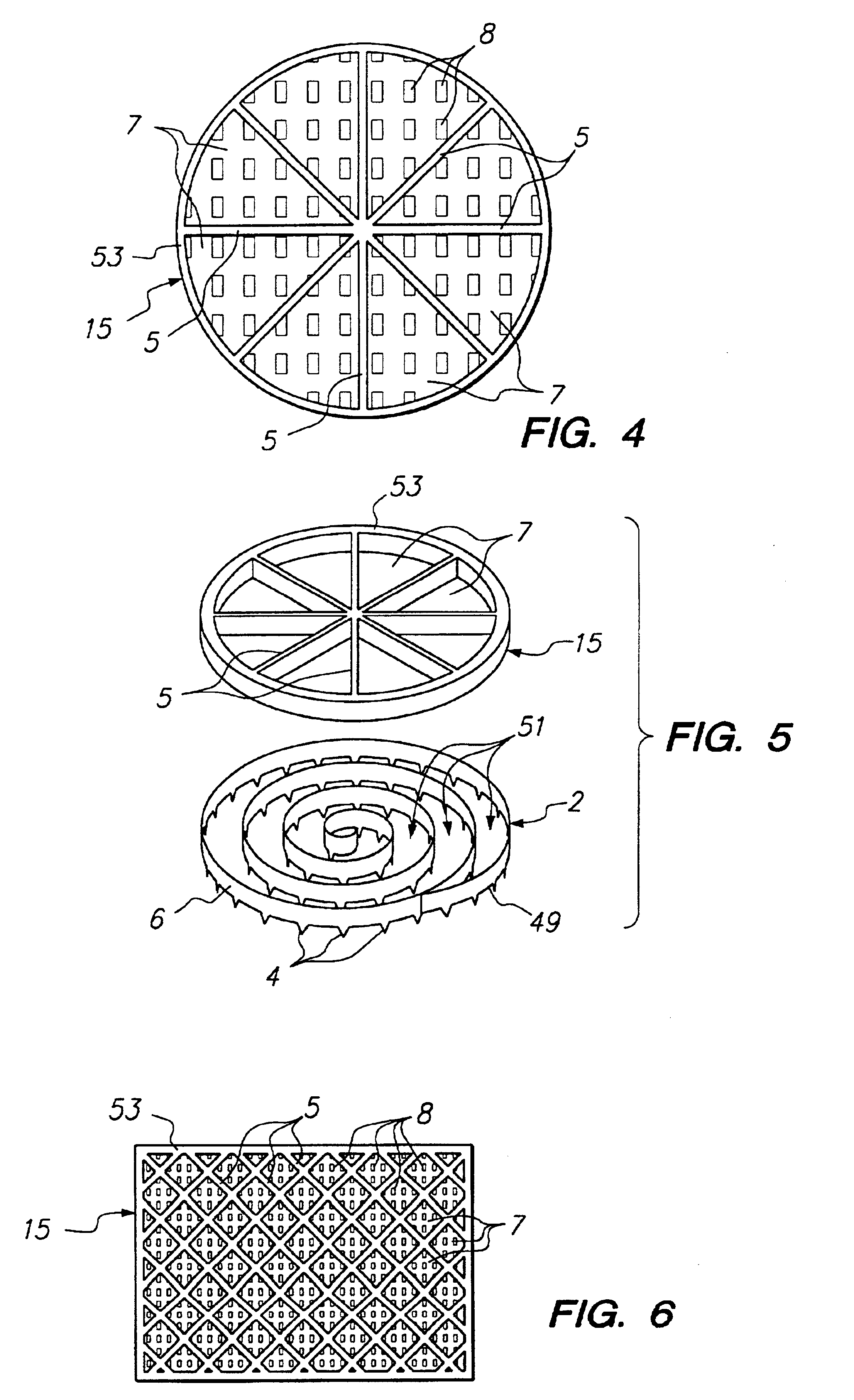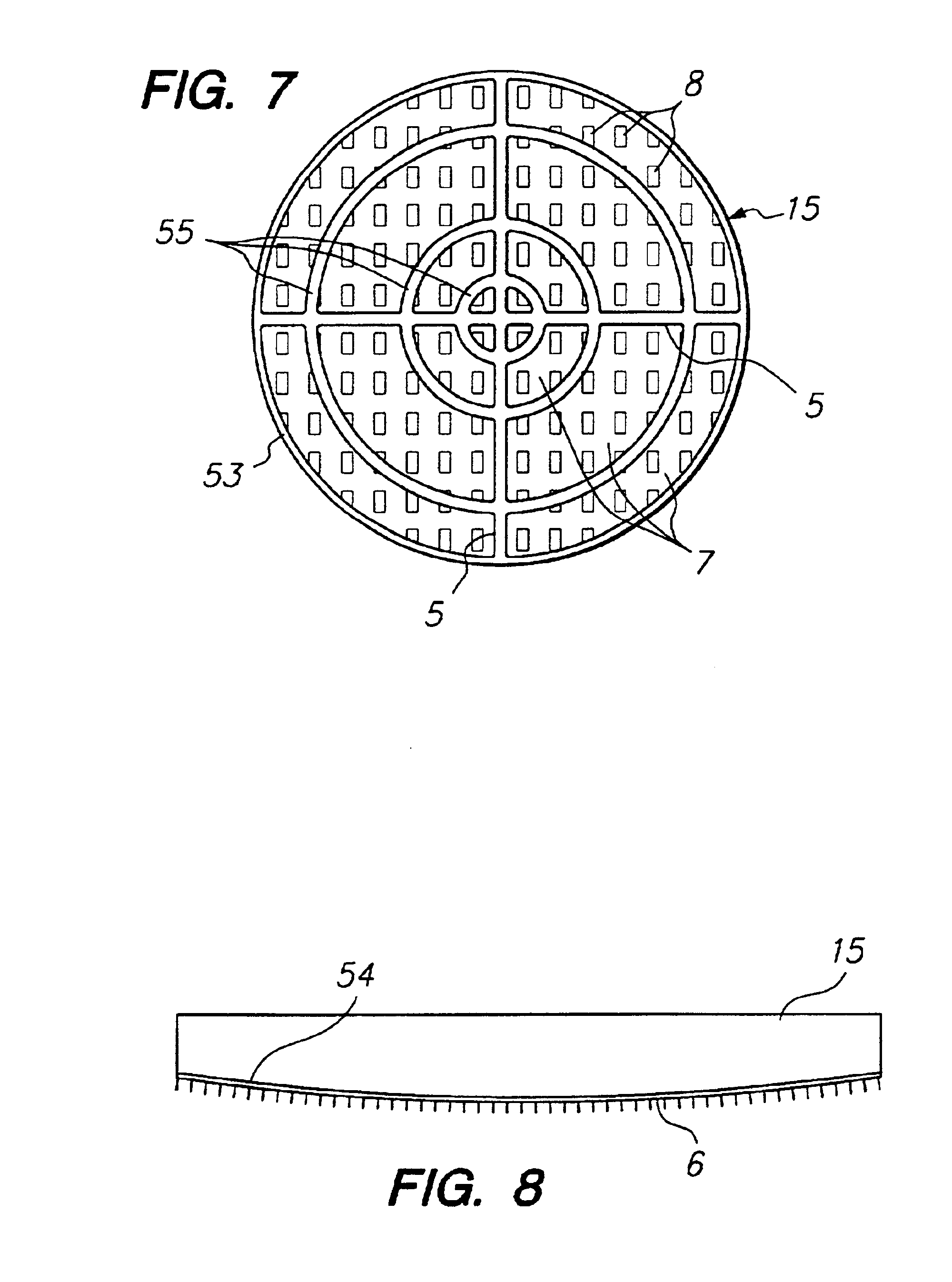Device for enhancing transdermal agent flux
- Summary
- Abstract
- Description
- Claims
- Application Information
AI Technical Summary
Benefits of technology
Problems solved by technology
Method used
Image
Examples
Embodiment Construction
[0007]The present invention provides a device suitable for increasing transdermal flux. The device has microprotrusions which consistently and reliably penetrate a body surface (e.g., skin) to enhance agent delivery or sampling. The device of the present invention can be easily manufactured in high volumes and at low cost. The device of the present invention can penetrate the stratum corneum of skin with a plurality of microprotrusions to form pathways through which a substance such as a drug can be introduced (i.e., delivery) or a substance such as a body analyte can be withdrawn (i.e., sampling). A principal advantage of the present invention is that the device ensures uniform penetration (i.e., generating the same size and depth pathways) by the microprotrusions across the device. Furthermore, the present invention reproducibly provides uniformity in penetration from patient to patient.
[0008]In one aspect, the invention comprises a rigid structure which contacts and extends acros...
PUM
 Login to View More
Login to View More Abstract
Description
Claims
Application Information
 Login to View More
Login to View More - R&D
- Intellectual Property
- Life Sciences
- Materials
- Tech Scout
- Unparalleled Data Quality
- Higher Quality Content
- 60% Fewer Hallucinations
Browse by: Latest US Patents, China's latest patents, Technical Efficacy Thesaurus, Application Domain, Technology Topic, Popular Technical Reports.
© 2025 PatSnap. All rights reserved.Legal|Privacy policy|Modern Slavery Act Transparency Statement|Sitemap|About US| Contact US: help@patsnap.com



